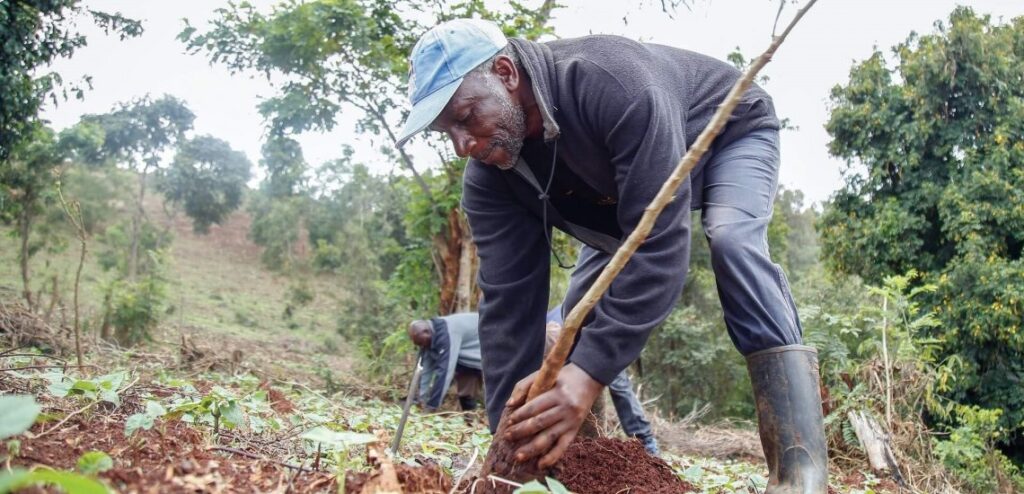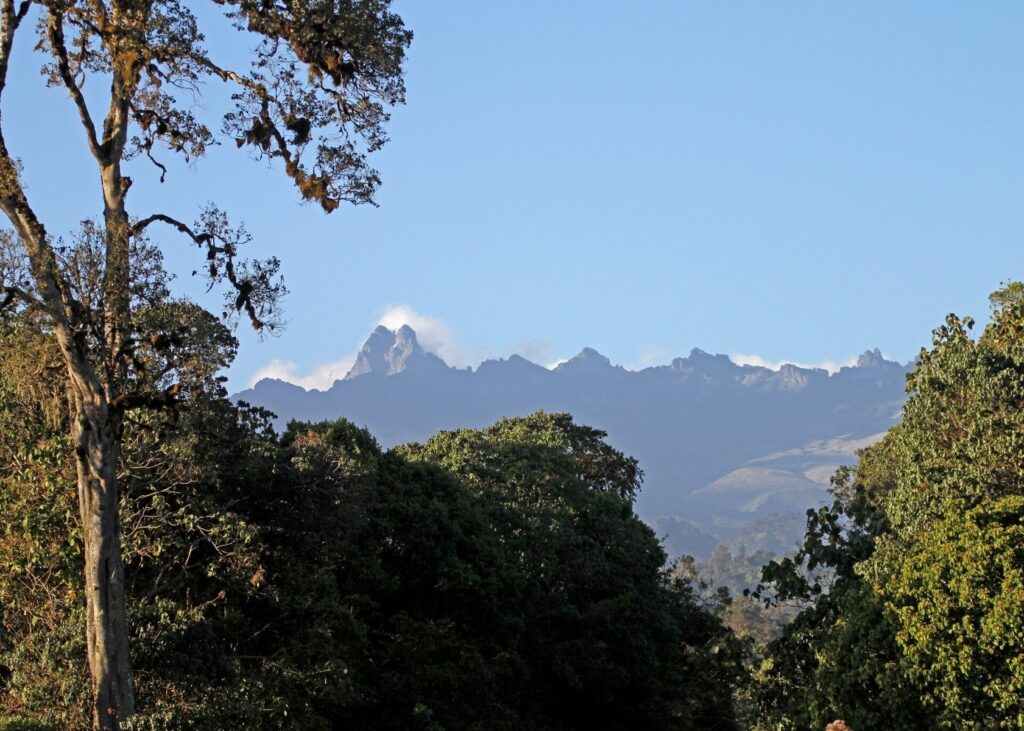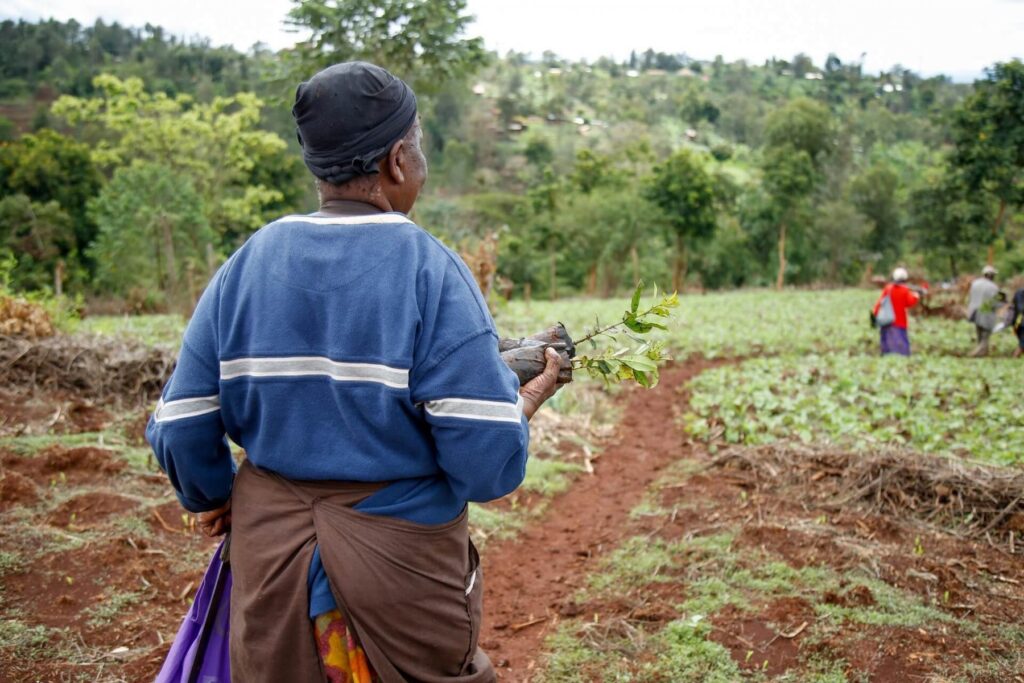Giving power to the people to protect iconic Mount Kenya Forest

Not only is Mount Kenya Forest one of the most iconic landscapes in Africa, it is also a crucial source of clean water for the country. Find out how Nature Kenya is empowering local citizens to form powerful partnerships that can protect and restore the forest for decades to come.
By John Mwacharo & Lewis Kihumba
A cuckoo calls in the distance, its soft, low voice travelling through the treetops, and the hitherto silent forest bursts into a symphony of birdsong. Once in a while, the rhythmic tunes are interrupted by a lone elephant trumpeting on the distant plains. Then suddenly, the chirping stops as quickly as it began, and the forest falls eerily silent once again. This is Mount Kenya Forest, part of an ecosystem which includes Kenya’s highest and Africa’s second highest mountain, Mount Kenya, which rises to an elevation of 5,199 metres. The mountain’s sprawling slopes are cloaked in an array of ecosystems, ranging from forests to bamboo groves and moorland, and ultimately giving way to rocks, ice and snow on its three peaks.
Spanning five counties in Central Kenya, the forest covers an area of 213,082 hectares and is one of Kenya’s most important biodiversity hotspots, teeming with unique flora and fauna. It is also one of Kenya’s five main water catchments and provides vital socio-econonomic and ecosystem services, including water purification, climate regulation and soil retention. Sadly, over the years the forest’s protective cover has come under threat from various human activities including logging, charcoal burning, and illegal settlements. This in turn has led to soil erosion, causing the sedimentation of rivers and streams and affecting agricultural productivity downstream.
Kimani Kiarie, a local citizen living adjacent to the forest, says: “The destruction of the Mount Kenya Forest is having a serious negative impact on our livelihoods. The yields on our farms have drastically reduced compared to thirty years ago. We have also seen increased human-widlife conflict, especially elephants, which routinely invade our farms.”

Since 1998, Nature Kenya (BirdLife Partner) has been carrying out various interventions to restore Mount Kenya Forest. One key strategy is collaborating with communities living adjacent to the forest through Community Forest Associations (CFAs). Currently, Nature Kenya is partnering with 27 CFAs drawn from various counties surrounding the forest including Meru, Tharaka-Nithi, Embu, Kirinyaga and Nyeri, working together to restore degraded forest blocks. In 2019, local CFA members planted 421,800 indigenous trees in 18 forest blocks and propagated over 700,000 tree seedlings in their nurseries.
To further streamline forest restoration operations, Nature Kenya is giving local people the skills they need to independently protect their forest. CFA members have been trained in leadership skills, governance and institutional management, resource mobilization, advocacy, biodiversity monitoring, and more. Resource mobilization training has allowed the CFAs to engage other stakeholders to finance forest conservation efforts.
Because of this, Mount Kenya’s 27 CFAs are now among the recipients of funding worth US $ 32,000 from the Upper Tana Natural Resources Management Project, which supports communities to manage natural resources sustainably. This funding is a milestone in the participatory forest management approach in Mount Kenya. Community groups are now directly mobilizing resources from public and private entities to finance conservation activities.
“After training them, the CFAs are now capable of diversifying their financial resource bases to complement their forest restoration efforts,” says Charles Kiama, Nature Kenya’s Conservation Officer. The funds will go towards supporting various sustainable livelihood projects such as setting up tree nurseries, which will create employment and reduce poverty levels among forest-adjacent communities through conservation, management and sustainable use of the forest.

Besides funding, the Upper Tana Natural Resources Management Project also seeks to improve the incomes and living standards of target groups through initiatives that work alongside sustainable resource use. To this end, 22 CFAs received a grant worth US $ 20,000 from the project in 2019. Furthermore, the CFAs are engaging other organizations and corporations including the Mount Kenya Trust, Safaricom PLC and Green Energy Limited.
In adittion to these significant achievements, Nature Kenya, with funding from World Land Trust, The Darwin Initiative, and the newly launched Trillion Trees ReForest Fund, is partnering with the CFAs and other stakeholders to restore some of the most degraded areas of Mount Kenya forest. Since 2017, about 650,000 trees, covering 650 hectares, have been planted through this partnership.
“Working with CFAs is one of the best way of achieving our goal of ten percent forest cover in Kenya. More investment from private institutions and the government is required to enhance the capacity of communities engaged in forest restoration activities,” notes Joel Siele, the Local Empowerment Manager at Nature Kenya.
A business case for restoration of Mount Kenya forest has also been developed with support from the Critical Ecosystem Partnership Fund*. Under this initiative, local communities (water ‘sellers’) protect and restore the watershed, with financial support from downstream water users (‘the buyers’). Kenya Breweries Limited adopted the business case in 2017 and has since facilitated planting and nurturing of 100,000 seedlings. “Our main target is large-scale water buyers and consumers of resources from Mount Kenya. We are supporting CFAs to partner with the stakeholders who are willing to engage in forest restoration activities,” adds Kiama.
It may be too early to fully assess the impact of the forest restoration work in Mount Kenya, but things are certainly looking up. “We have noted a reduction in threats to Mount Kenya forest. Illegal activities have slightly decreased and communities are more aware of the importance of conserving this important water catchment,” concludes Siele.
*The Partnering with Business for Mount Kenya Water Ecosystem Services Restoration project was made possible through funding from the Critical Ecosystem Partnership Fund, a joint initiative of l’Agence Française de Développement, Conservation International, the European Union, the Global Environment Facility, the Government of Japan and the World Bank.



